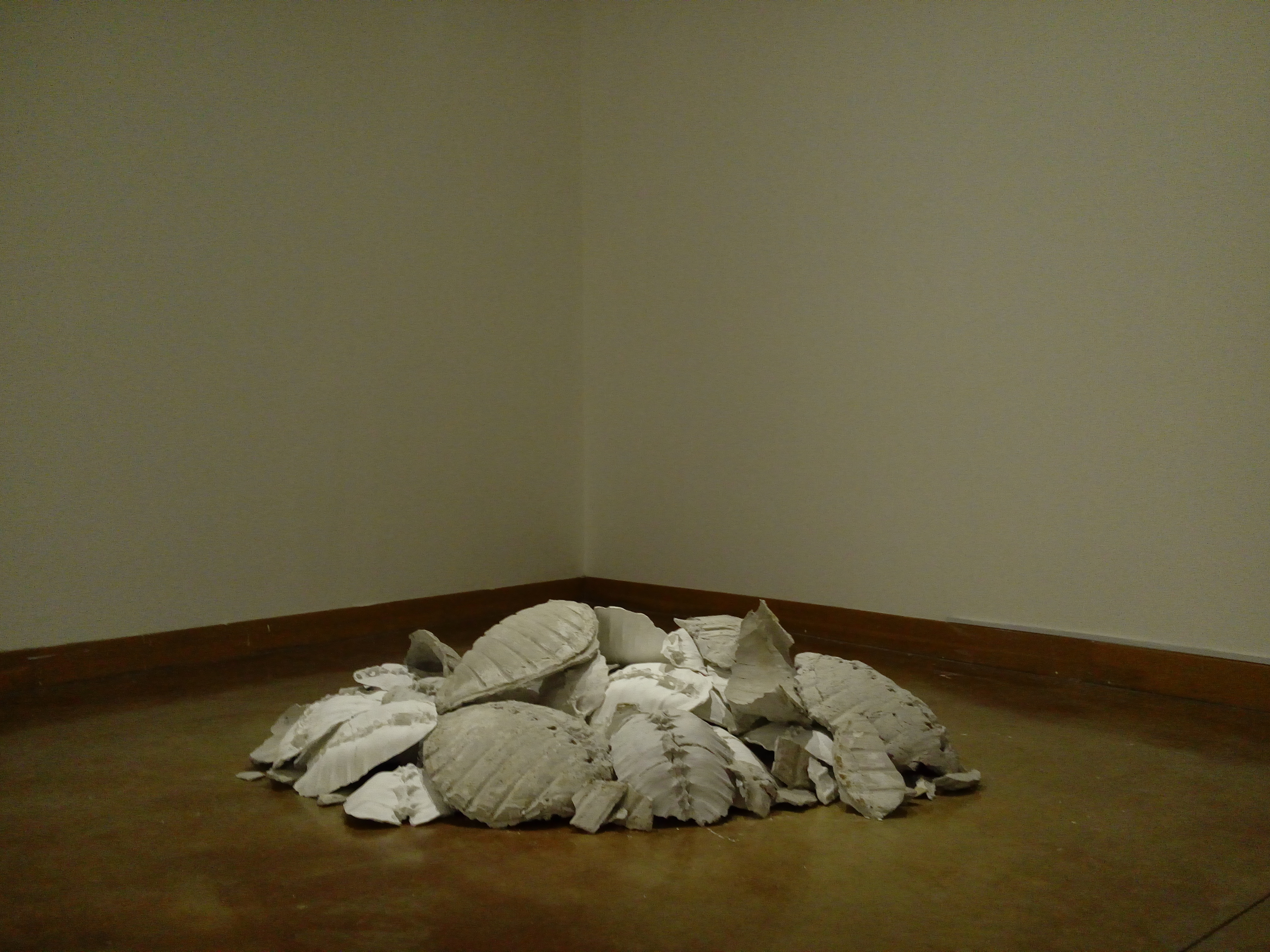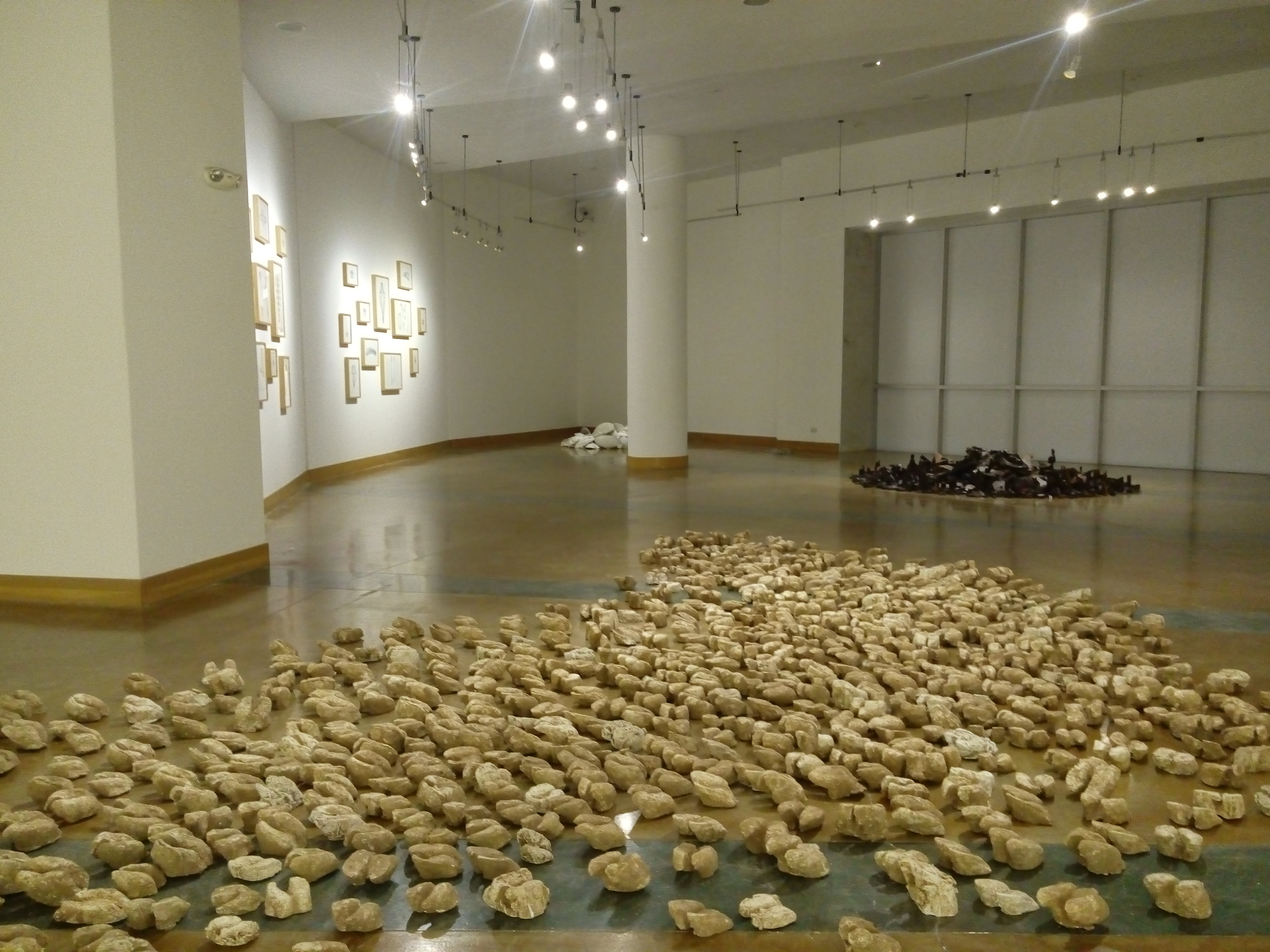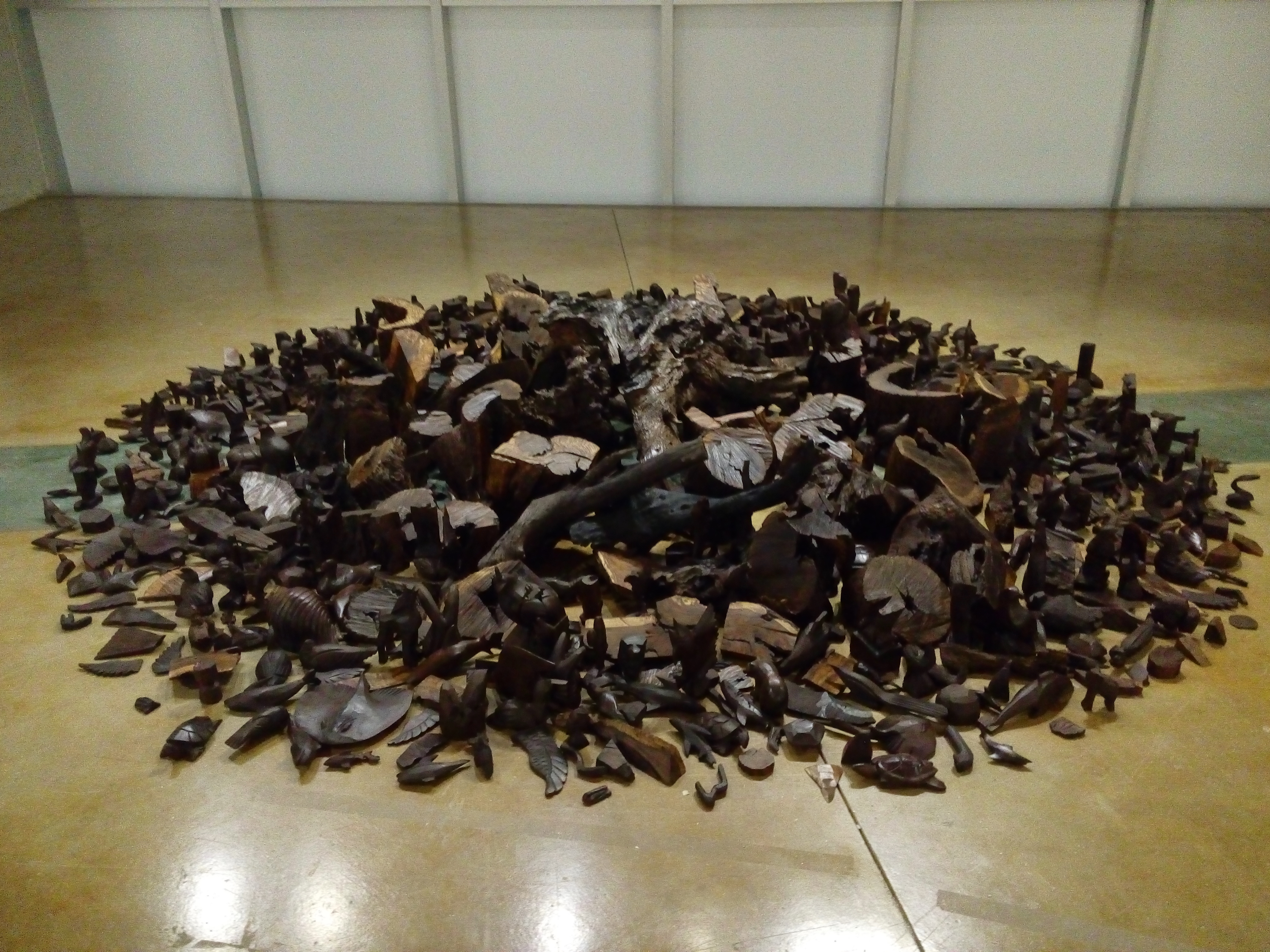Detritos - Miriam Salado
Sonora Art Museum, MUSAS, Hermosillo.
October 2016
![]()
![]()
![]()
![]()
![]()
![]()
Sonora Art Museum, MUSAS, Hermosillo.
October 2016





When we think of the desert, it seems that we have been nourished by a perpetual and immovable image, where the stories and events that its inhospitable territory keeps are common and time repeats itself in incessant cycles where we can never manage to visualize where the sand ends. If we walked towards the horizon we would find ourselves continually chasing mirages. If we dug we would find ourselves before an infinite tomb.
The image of the desert appears before us as an unexplored map, a desolate, arid and flat space that is constantly represented as a place of transit, an archetype of a long, exhausting and demoralizing journey through the solitude of the encounter with oneself, where all efforts seem useless, the difficulties endless and the challenges impossible to overcome.
Although in the recent history of our Mexico, the search for missing bodies in the desert evokes in the first instance an overwhelming encounter with the other, since the beginning of 2015, the work that Miriam Salado carries out in the Sonoran desert has become a series of ethnoarchaeological investigations where, on the one hand, the material culture of contemporary pre-industrial communities is questioned and, on the other, reflects on their environment and natural strength, causing detriment to both parties.
During these trips, Miriam found broken and charred loggerhead shells on the side of the road; animal bones were studied and drawn to highlight their deterioration and wear (resembling enlargements of pieces of burned wood); in the pools generated by the rain, cattle tracks were collected and reproduced before they evaporate in the sand; in the town of Miguel Alemán, 63 kilometers from Hermosillo, several workshops that work from the paralegal make figures of Palo Fierro (Olneya Tesota), cut down green trees or trees that are on private property, Miriam buys them at low prices and has make visible how in the post-industrial era that demands a cultural identity turned into a souvenir.
The image of the desert appears before us as an unexplored map, a desolate, arid and flat space that is constantly represented as a place of transit, an archetype of a long, exhausting and demoralizing journey through the solitude of the encounter with oneself, where all efforts seem useless, the difficulties endless and the challenges impossible to overcome.
Although in the recent history of our Mexico, the search for missing bodies in the desert evokes in the first instance an overwhelming encounter with the other, since the beginning of 2015, the work that Miriam Salado carries out in the Sonoran desert has become a series of ethnoarchaeological investigations where, on the one hand, the material culture of contemporary pre-industrial communities is questioned and, on the other, reflects on their environment and natural strength, causing detriment to both parties.
During these trips, Miriam found broken and charred loggerhead shells on the side of the road; animal bones were studied and drawn to highlight their deterioration and wear (resembling enlargements of pieces of burned wood); in the pools generated by the rain, cattle tracks were collected and reproduced before they evaporate in the sand; in the town of Miguel Alemán, 63 kilometers from Hermosillo, several workshops that work from the paralegal make figures of Palo Fierro (Olneya Tesota), cut down green trees or trees that are on private property, Miriam buys them at low prices and has make visible how in the post-industrial era that demands a cultural identity turned into a souvenir.